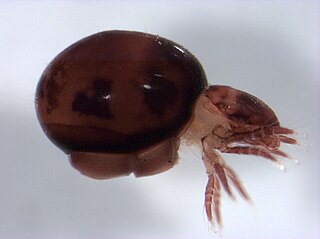
Oribatida, also known as oribatid mites, moss mites or beetle mites, are an order of mites, in the "chewing Acariformes" clade Sarcoptiformes. They range in size from 0.2 to 1.4 millimetres. There are currently 12,000 species that have been identified, but researchers estimate that there may anywhere from 60,000 to 120,000 total species. Oribatid mites are by far the most prevalent of all arthropods in forest soils, and are essential for breaking down organic detritus and distributing fungi.

Brachypylina is a suborder of oribatid mites.
Austrophthiracarus is a genus of mites in the family Steganacaridae.
Plateremaeidae is a family of oribatids in the order Sarcoptiformes. There are about 7 genera and 19 described species in Plateremaeidae.
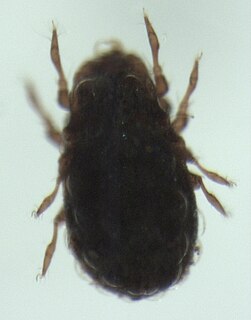
Carabodidae is a family of oribatids in the order Oribatida. There are at least 20 genera and 300 described species in Carabodidae.
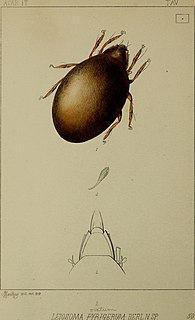
Liacaridae is a family of mites in the order Oribatida. There are about 7 genera and more than 240 described species in Liacaridae.
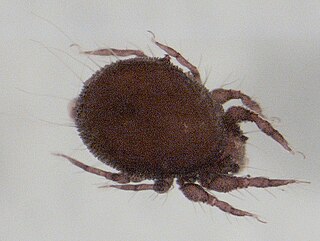
Hermanniellidae is a family of oribatids in the order Oribatida. There are about 9 genera and at least 50 described species in Hermanniellidae.
Lohmanniidae is a family of oribatids in the order Oribatida. There are at least 20 genera and 180 described species in Lohmanniidae.
Galumnidae is a family of mites and ticks in the order Sarcoptiformes. There are at least 30 genera and 410 described species in Galumnidae.
Achipteriidae is a family of mites and ticks in the order Sarcoptiformes. There are about 9 genera and at least 80 described species in Achipteriidae.
Mochlozetidae is a family of mites and ticks in the order Sarcoptiformes. There are about 12 genera and at least 50 described species in Mochlozetidae.
Haplozetidae is a family of mites and ticks in the order Sarcoptiformes. There are at least 20 genera and 210 described species in Haplozetidae.

Caeculidae is a family of mites in the order Trombidiformes, the only family of the superfamily Caeculoidea. There are about 6 genera and more than 30 described species in Caeculidae, found in North America, Australia, and southern Africa. The oldest records of the family are from the Cenomanian aged Burmese amber, belonging to the extant genus Procaeculus.

Eupodoidea is a superfamily of mites in the order Trombidiformes. There are about 8 families and more than 160 described species in Eupodoidea.

Trombidioidea is a superfamily of mites in the order Trombidiformes. There are about 8 families and at least 430 described species in Trombidioidea.

Tetranychoidea is a superfamily of mites in the order Trombidiformes. There are about 5 families and more than 2,200 described species in Tetranychoidea.

Enarthronota is a suborder of mites in the order Oribatida. There are about 14 families and more than 450 described species in Enarthronota.
Exochocepheus is a genus of mites in the family Scutoverticidae. There are about seven described species in Exochocepheus.
Licneremaeoidea is a superfamily of mites in the order Oribatida. There are about 6 families and more than 170 described species in Licneremaeoidea.
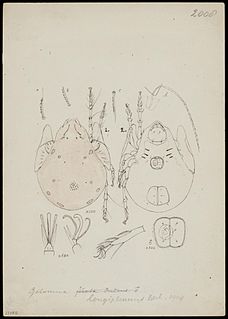
Galumna is a genus of mite in the family Galumnidae.











